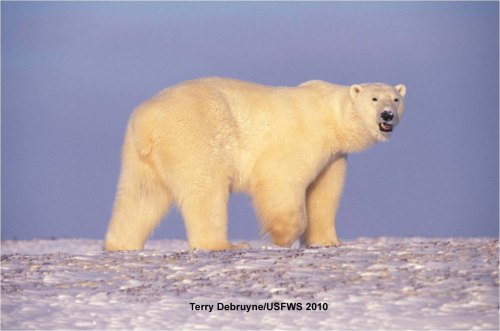- Joined
- Jan 28, 2013
- Messages
- 94,823
- Reaction score
- 28,342
- Location
- Williamsburg, Virginia
- Gender
- Male
- Political Leaning
- Independent
Derocher admits Western Hudson Bay polar bear population may not be declining
Posted on December 30, 2018 | Comments Offon Derocher admits Western Hudson Bay polar bear population may not be declining
Earlier this year, I challenged a journalist to ask to see the data used by Andrew Derocher and his colleagues to support their repeated claims that Western Hudson Bay polar bears are having trouble surviving. It almost happened.

David Rose, writing for The Mail on Sunday, has produced an excellent feature on the conflict between Nunavut Inuit and biologists about polar bear management, got Andrew Derocher to tell the truth about current polar bear health and survival.
Or, to be more precise, to waffle a bit on his standard message of doom:
But did he actually produce the data that show what’s been happening with cub survival or the body condition of females since 2004? Apparently not — but his admission that conditions are not as bleak as he continually portrays them suggests he is covering for data that says the same: polar bears in Western Hudson Bay are doing just fine and Inuit are right to be worried.
This may be as good as it gets unless the people of Nunavut can force Derocher to show his data.
Posted on December 30, 2018 | Comments Offon Derocher admits Western Hudson Bay polar bear population may not be declining
Earlier this year, I challenged a journalist to ask to see the data used by Andrew Derocher and his colleagues to support their repeated claims that Western Hudson Bay polar bears are having trouble surviving. It almost happened.

David Rose, writing for The Mail on Sunday, has produced an excellent feature on the conflict between Nunavut Inuit and biologists about polar bear management, got Andrew Derocher to tell the truth about current polar bear health and survival.
Or, to be more precise, to waffle a bit on his standard message of doom:
“Even Prof Derocher, who is convinced the bears’ long-term future is bleak, accepts that ‘the wheels are not coming off yet’, while ‘some bear populations are doing fine’. In West Hudson Bay, there has been ‘a recent period of stability’, he says, and though ‘we were seeing starving bears, starving cubs on land, that seems to have slowed down’. Then again, the computer models ‘are not great on the 5 – 10 year time-frame’, and it was possible that although the Arviat bears might look healthy now, they may be about to ‘fall off a cliff’.” [my bold]
This concession by Derocher suggests that Western Hudson Bay bears indeed are thriving, because he’s the guy who holds all the data. But he couldn’t help adding that disaster might be just around the corner.
But did he actually produce the data that show what’s been happening with cub survival or the body condition of females since 2004? Apparently not — but his admission that conditions are not as bleak as he continually portrays them suggests he is covering for data that says the same: polar bears in Western Hudson Bay are doing just fine and Inuit are right to be worried.
This may be as good as it gets unless the people of Nunavut can force Derocher to show his data.











